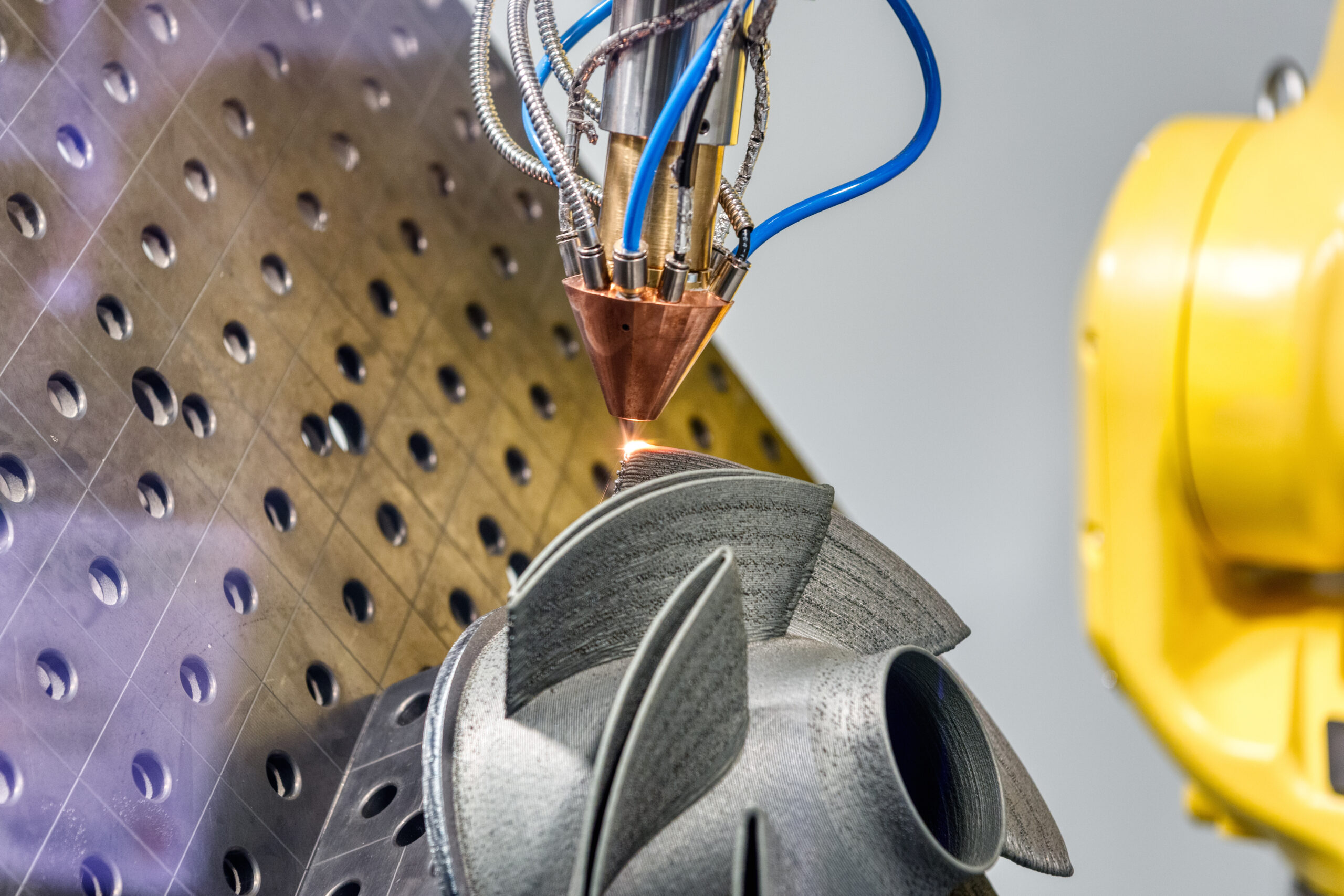More and more Original Equipment Manufacturers (OEMs) are bringing their 3D printed parts to Moseys for subtractive processes such as precision CNC machining and surface finishing. Exceptional results are possible when you integrate additive and subtractive manufacturing, but the combined techniques also introduce new and unexpected opportunities for error.
By collaborating with our team during your part’s design phase, we can help you avoid costly reprints and other time-consuming setbacks. Here’s what you need to know.
Integrated Manufacturing Solutions
 Additive processes like 3D printing can form intricate geometries that are extremely difficult or impossible to achieve with conventional CNC machining. While our 5-axis machines can shape many complex features, radii, and angles, the labor-intensive demands of such design elements can make machining a cost-prohibitive choice.
Additive processes like 3D printing can form intricate geometries that are extremely difficult or impossible to achieve with conventional CNC machining. While our 5-axis machines can shape many complex features, radii, and angles, the labor-intensive demands of such design elements can make machining a cost-prohibitive choice.
Integrated manufacturing leverages the strengths of additive and subtractive processes to optimize quality while minimizing costs and lead times.
Additive manufacturing in action
Large, global organizations such as Bugatti, L’Oreal, Hershey, and Boeing embrace 3D printing as a critical aspect of their manufacturing processes. As 3D printing becomes faster, less expensive, and more advanced, we expect OEMs of every size to embrace integrated manufacturing solutions that allow them to take their parts and products from prototype to production without ballooning their budgets.
Subtractive manufacturing in action
Resin, thermoplastic, graphite, polycarbonate, nylon, carbon fiber filled, and titanium: Moseys’ subtractive manufacturing processes can improve parts 3D printed from these materials and more. Our Anaheim machine shop‘s OEM customers bring their 3D printed parts to us for a wide range of subtractive processes, from extensive precision CNC machining and Swiss machining to targeted cutting, drilling, grinding, sanding, and more.
Design Considerations for Integrated Manufacturing
To obtain the best possible results, you should design your part with machining in mind. Beyond simply knowing that your 3D printed part will undergo subtractive processes, you’ll want to collaborate directly with our team to learn exactly how we’ll handle your part and achieve your specifications.
1. Material
When a 3D printed part heads for the machine shop floor, it needs enough material to accommodate the subtractive processes it will undergo.
Will we be machining tight tolerances? Polishing the part to a high-end finish? Tapping holes? Maintaining concentricity between cylinders? Whatever your part’s geometric dimensions and tolerances, subtractive processes aren’t possible without sufficient material.
Suppose we receive a 3D printed part that we can’t machine due to insufficient material; in that case, your only option will be to revisit the design and reprint the part—an outcome nobody wants. We prefer to collaborate with you early in the design phase to ensure you account for your part’s machining needs. It’s never too soon to contact us for guidance!
2. Workholding
Before our Anaheim machine shop can proceed with machining your part, we need to secure it with workholding. Clamps, vises, soft jaws, fixtures, and jigs are all examples of standard workholding solutions, all of which can be time-intensive and costly to customize and build for your unique part.
As your subtractive manufacturer, Moseys can advise you on the type of workholding your part will require. If you design the workholding into your 3D printed part, we won’t need to build it, cutting your cost and lead time. We’ll quickly and easily remove the additional material during machining.
Collaborate with Moseys for Excellent Integrated Manufacturing
To successfully integrate 3D printing with our precision machining services, we’ll work closely with your team to efficiently and seamlessly pair the two manufacturing methods and achieve superior results.